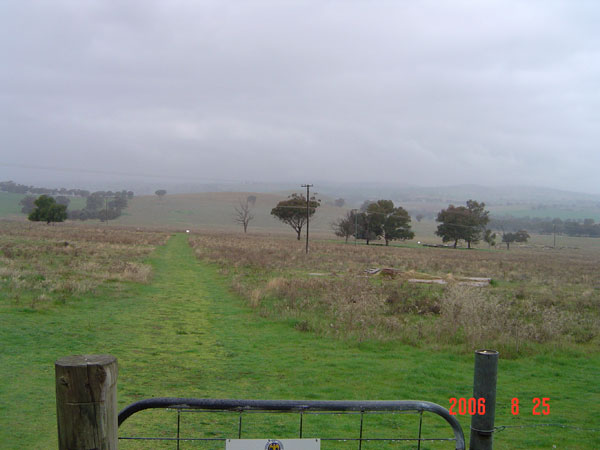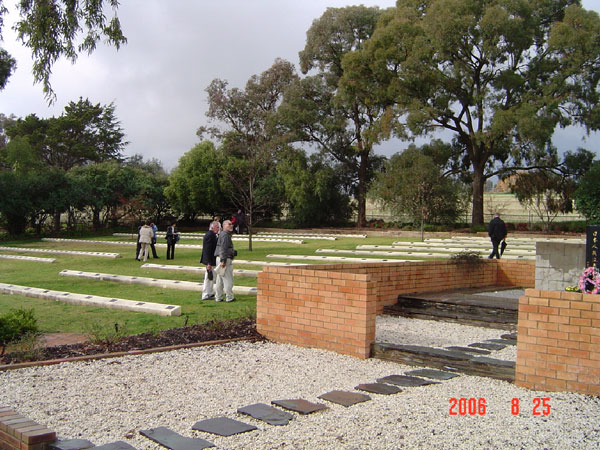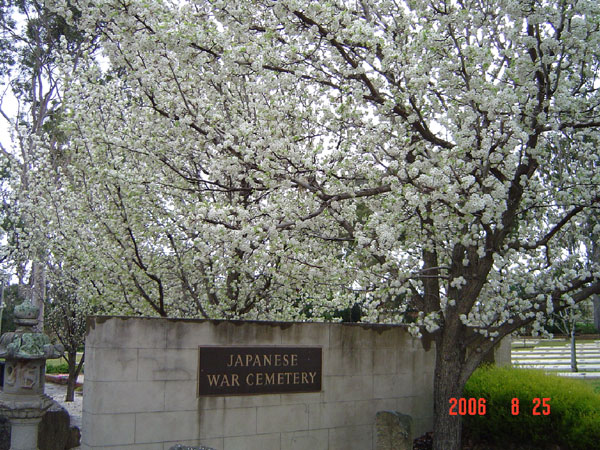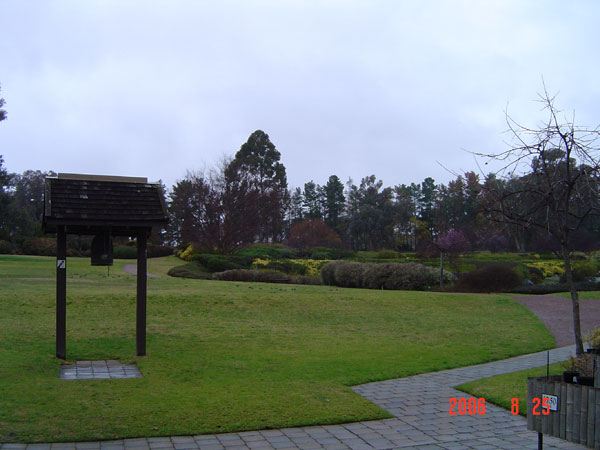| Seminars |
Seminar in Australia
Visit to Cowra
-Site of the Japanese POW Camp, Japanese Cemetery, and Japanese Garden-
After the Seminar, all members of the POW-RNJ visited the town of Cowra, about 250 km from Canberra. In this town was a POW Camp during WWII, and many Japanese and Italian POW were interned here. On the early morning of August 5, 1944, about 1,100 Japanese POWs carried out a desperate breakout with knives and forks as weapons. By gunfire of the Australian guards, 231 POWs and 4 Australian guards were killed in this incident.
Soon after the war was over, by a voluntary initiative of the people of Cowra, and good offices of the Australian Government, the Japanese Cemetery were established. Thereafter, there was a growing tendency to restore good relationship between Australia and Japan among the people concerned. With the cooperation and financial support of the Governments of the two countries, business enterprises, and various citizens' groups, the Japanese garden was build as a symbol of peace and good friendship. In addition, the cherry trees were planted along the road connecting the site of the Camp, Cemetery and the Garden.
Our members were guided by Mr. Don Kibbler and Mr. Toney Mooney, who had expended every effort to the construction of the Japanese garden, and visited the historical places in the town.
In the visitors' center at the entrance of the town, the photos of the Japanese and Italian POWs, and historical items of the breakout are on display. Pathetic and sorrowful expressions on the Japanese POWs and smiling carefree Italian POWs are quite contrastive.
The vast site of the Camp has now been reclaimed by the prairies, and a few foundations of the buildings remain. At the observatory is a panel showing the photos and the sketch of the Camp and a plate inscribed the historical facts of the breakout. The Italian POWs' memorial monument is also erected here. In the Japanese Cemetery, not only the POWs who were perished in the breakout, but also those who had come down to Australia and worked as pearl divers before the war were buried.
It is said that the names inscribed on the graves, beginning with "Minami Tadao," who sounded the charge are false. The treatment in the Camp was by no means bad. The Japanese POWs, however, who firmly believed in Senjin Kun (Ethics in Battle), "Do not live in dishonorable captivity," never told their real name, thinking of "the fame of their household," and "do not leave a bad name behind after his death." They elected to die honorably by fighting. On August 5 each year, a memorial service is held at the site of the POW Camp, and a few Japanese survivors of the breakout attend the service in recent years.
The cherry blossoms in the Japanese garden and along the cherry tree-lined road were in full bloom when we visited Cowra. We were told that to take care of the cherry trees in a dry country like Australia requires painstaking care. As though symbolizing warm hearts and minds of the people of Cowra, they were in full bloom, and beautiful.
After the visit to Cowra, the members of POW-RNJ dispersed to the Gold Coast, Sydney, Melbourne, Tasmania, and Featherston (NZ) in groups, visiting ex-POWs, civilian internees, and researchers. Each group reaped a rich harvest and has brought it back.

|

|
|
Site of the POW Camp |
Japanese Cemetery |

|

|
|
Cherry blossoms at the Japanese Cemetery |
The Japanese garden |